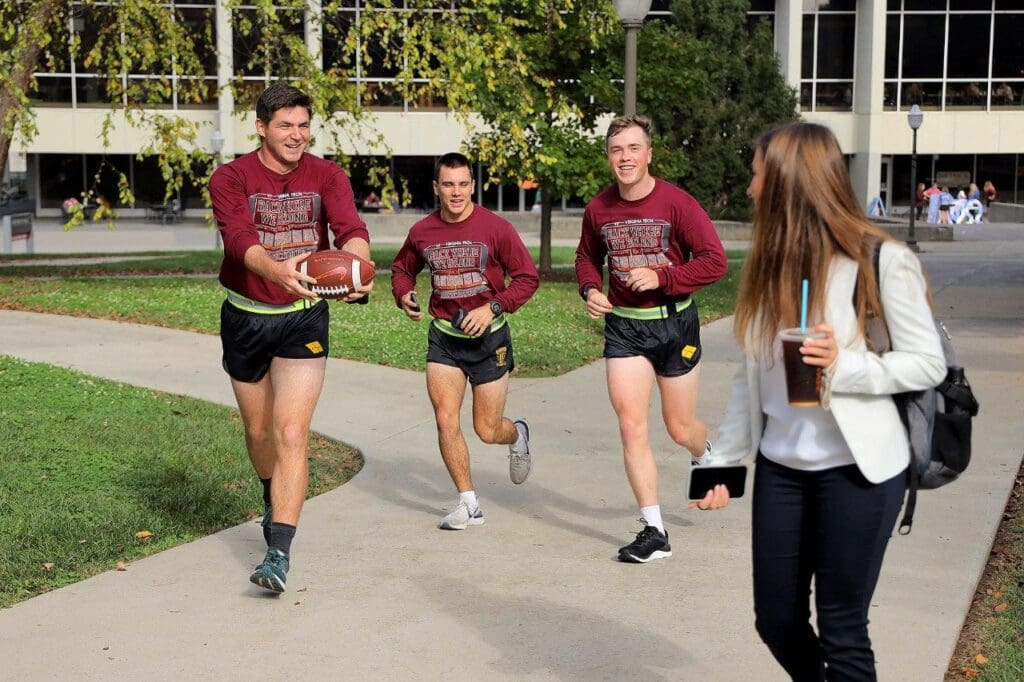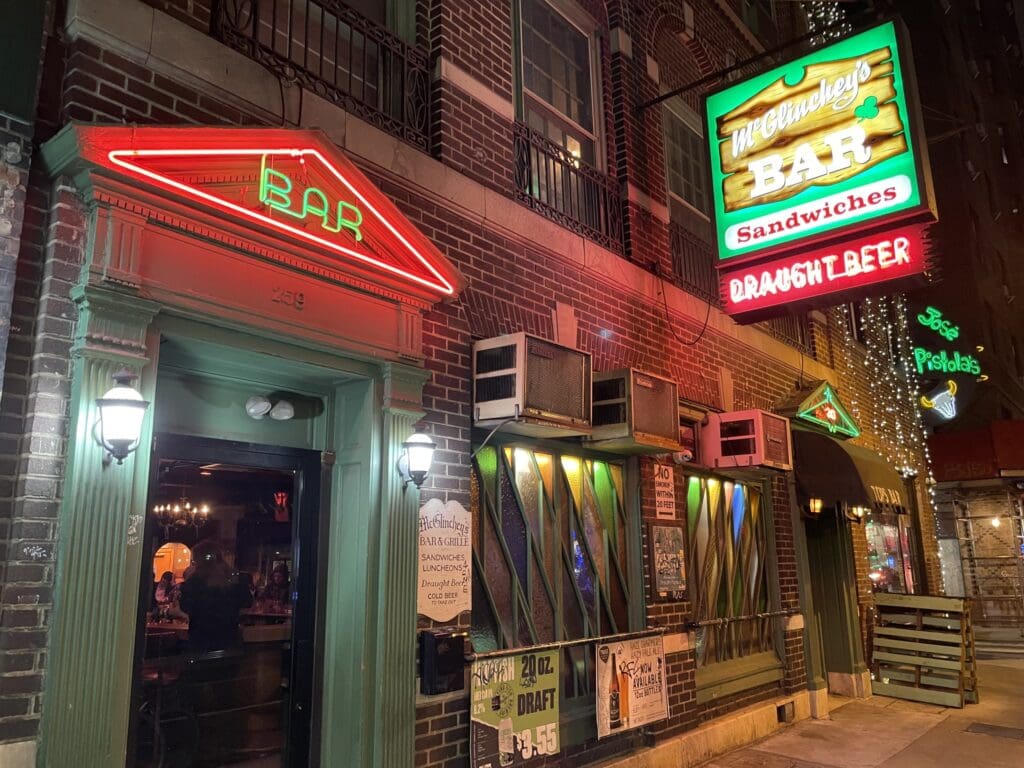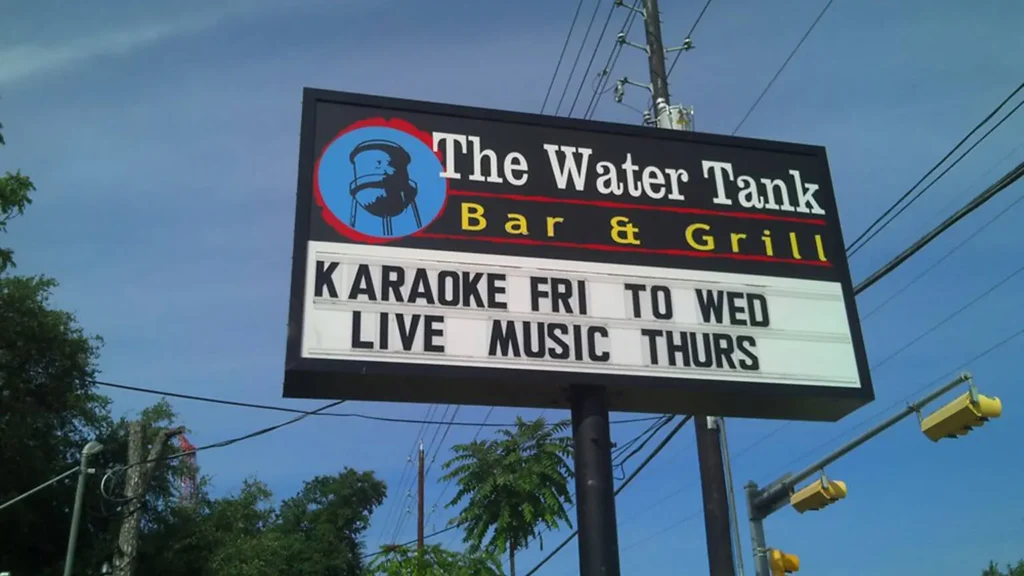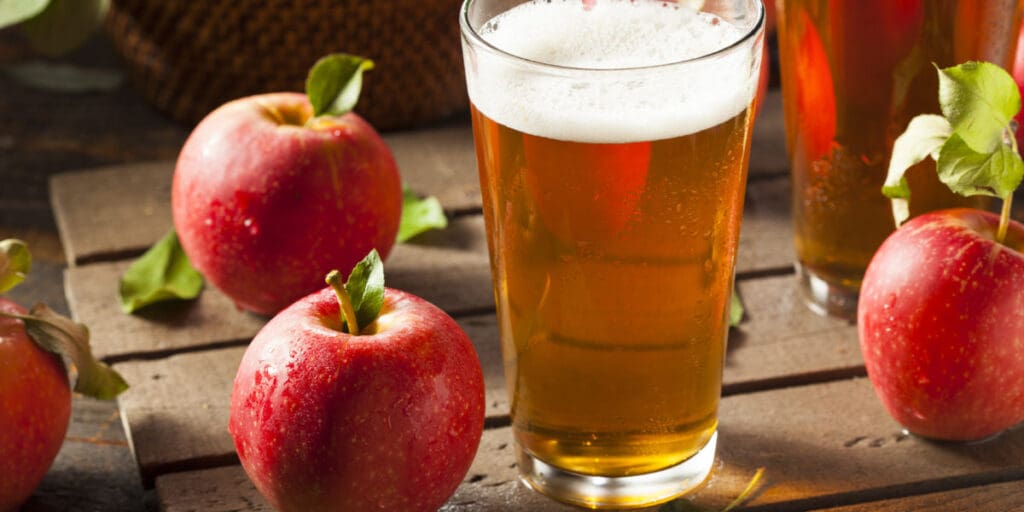
As one of America’s favorite fall beverage, the popularity of hard cider soars as soon as the leaves start to turn. But what is it exactly?
What is Hard Cider?
At its core (no pun intended,) hard cider is a fermented drink made from apples. Think wine, but swap the grapes for red delicious. Nearly half of all households are enjoying this seasonal beverage, with some of the leading brands you’ve probably heard of: Angry Orchard, Downeast Cider, or Bold Rock.
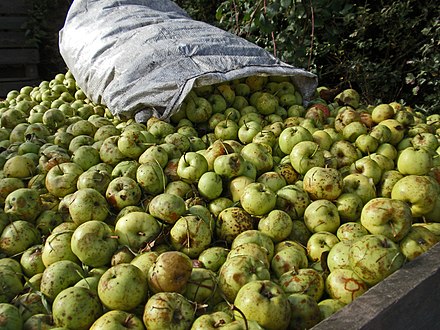
How is Hard Cider Made?
Start with apples (there are specific cider apples with higher sugar levels that translate better during fermentation). Once the apples are harvested, the juice is extracted, mixed with yeast, and fermented for a few weeks to a few months. Once it’s ready, the hard cider is carbonated and bottled.
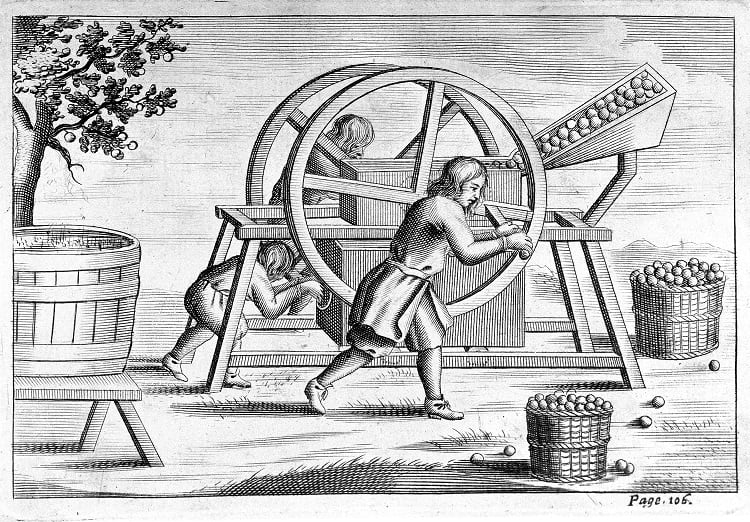
Who Made the First Hard Cider?
The origin of Hard cider dates back to the ancient Romans, but rose to real prominence in medieval Europe because it was safer to drink than water. Back in those days, they treated it like a health drink, claiming that it was good for your bladder, gout, you name it. It remained popular in Europe, and came with the colonists to North America.
Experts estimate that the colonists were planting apple trees for cider production within 10 years of their arrival starting in the Massachusetts Bay colony. Now it’s a staple in the region and across the country.
What cider are you sipping this fall? Let us know and we’ll have to pick up a case for a taste test!
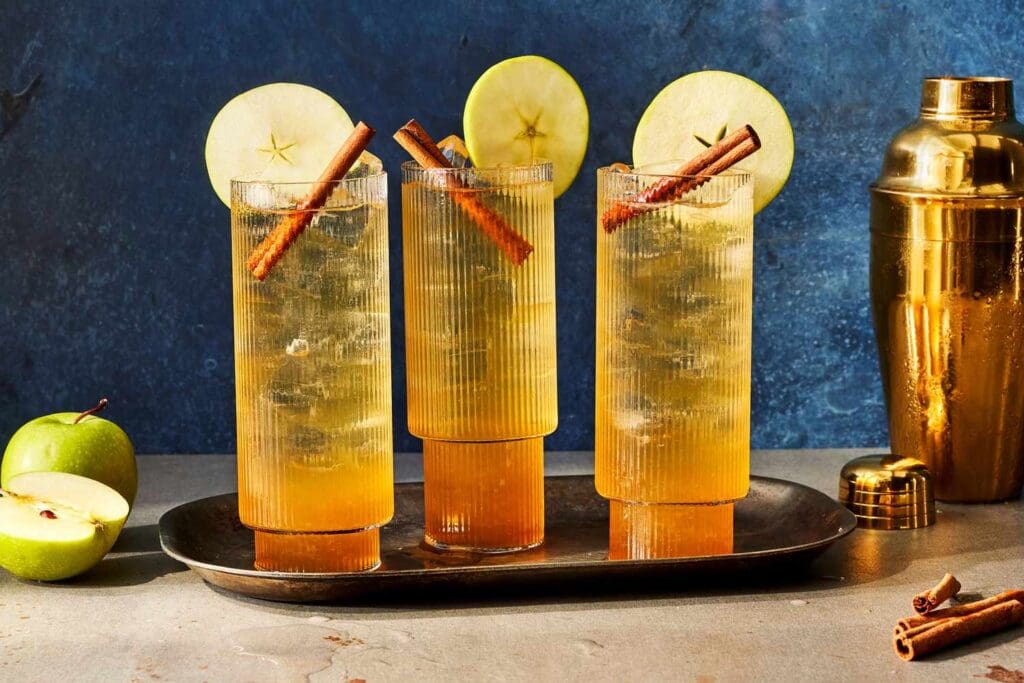
Whether it’s pumpkin spice or apple cider, the flavors of fall are some of the most iconic aspects of the season. And you don’t need to be drinking to fully enjoy them!
Looking to cut back on the hard stuff this fall? We’ve got you covered! Here’s a few of our favorite mocktails that you can enjoy all season long.
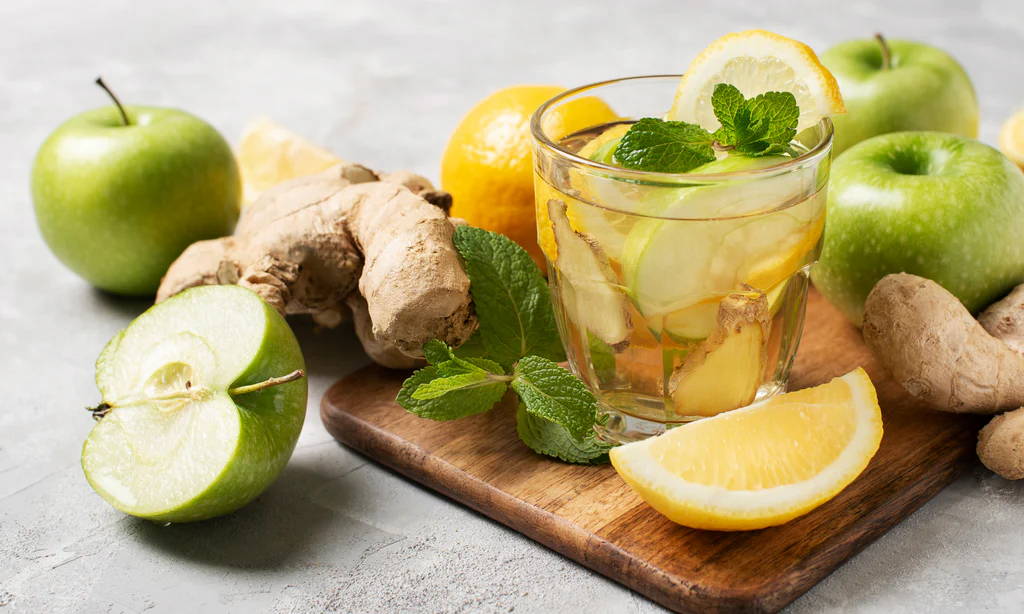
Apple Ginger Fizz
We like to imagine this mocktail being a favorite of Johnny Appleseed while he was trekking the country planting orchards. With classic fall flavors and a kick of ginger, this is a recipe you’ll keep coming back to well into winter.
- In a glass, add ice, 4 ounces of apple cider, and a few dashes of cinnamon bitters.
- Top with ginger beer, and garnish with an apple slice.
- Sit back and watch the leaves fall while you sip!
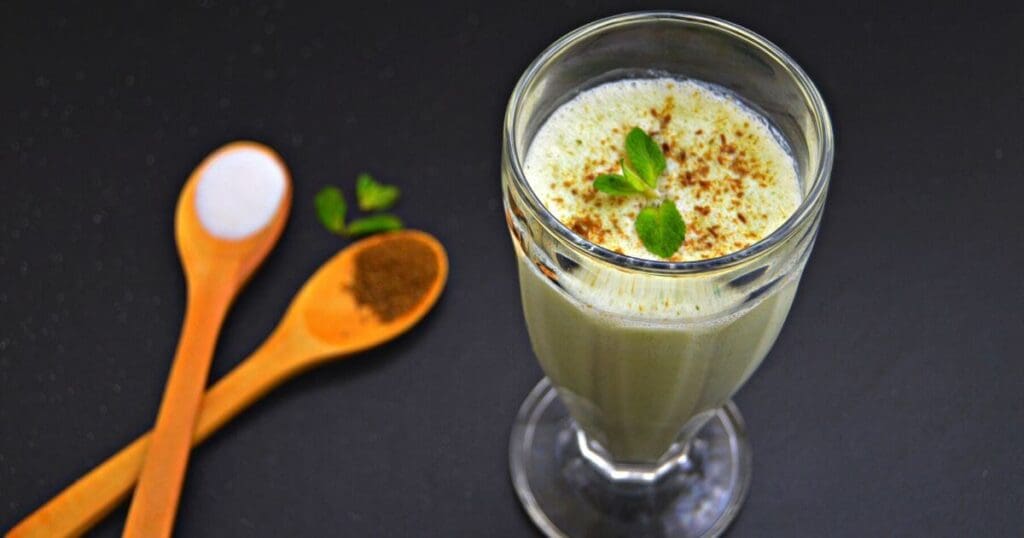
Spiced Lassi
Lassi is a North Indian, smoothie-like drink made with a base of yogurt that can be served sweet, fruity, or spiced. For those days where the weather is starting to turn cold, a nice savory drink can be the perfect complement to the falling leaves. Here’s a simple recipe:
- In a blender, add a cup of yogurt and a half cup of water.
- Add 2 thin ginger slices and a teaspoon of each: cumin, salt, coriander, mint.
- Add a handful of ice cubes.
- Blend until smooth, serve, and enjoy!
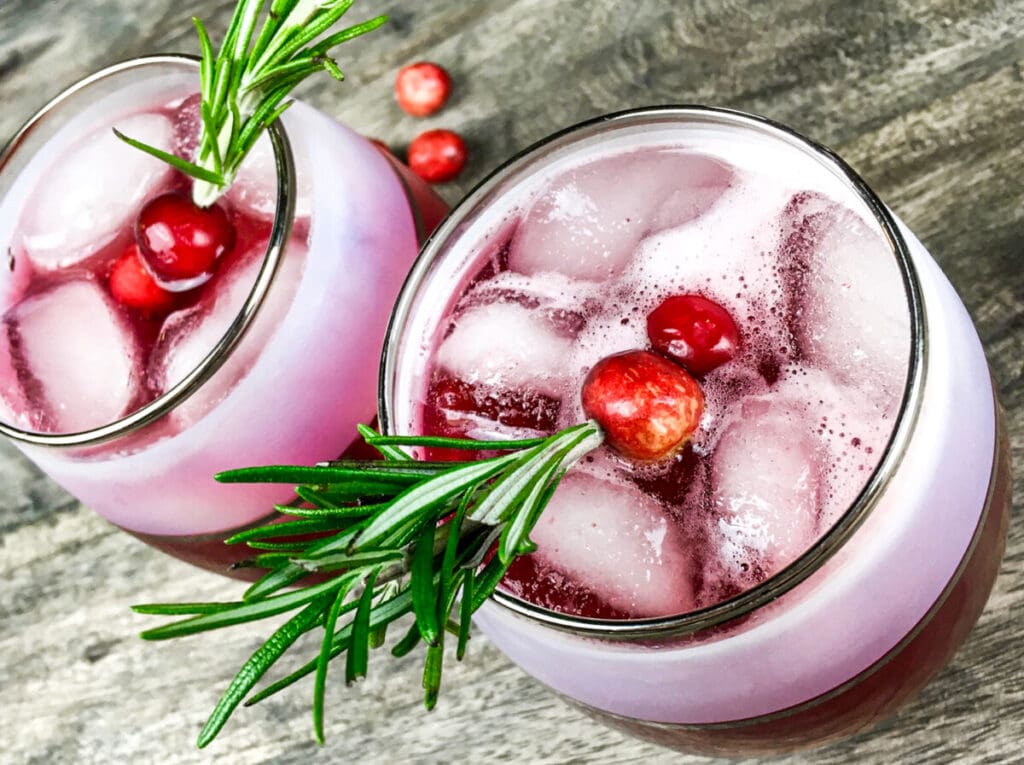
Cranberry Spritz
Did you know, you can make just about anything a fun non-alcoholic spritz with a splash of sparkling grape juice? If you want a seasonal combination, here’s our recipe for a cranberry-forward beverage:
- In a glass with ice, add 2 shots of cranberry juice.
- Quarter an orange, and juice one quarter into the glass.
- Top with sparkling white grape juice for a refreshing, bubbly drink!
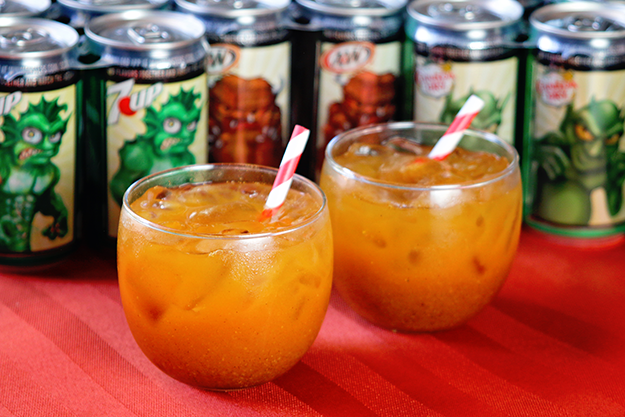
Pumpkin Spice Mocktail
You know we couldn’t make a list of fall mocktails without including something pumpkin flavored. right? If that’s your jam, this is your drink.
- In a small bowl, combine a ¼ cup of pumpkin puree, and ½ teaspoon of pumpkin spice and vanilla.
- In a glass, combine the pumpkin mixture with 3 ounces of ginger ale.
- Stir thoroughly until combined.
- Add ice, and enjoy!
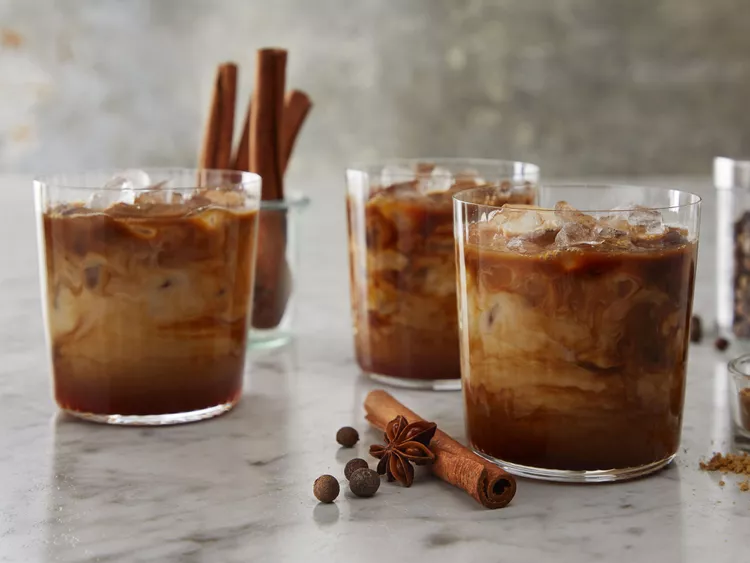
Dirty Chai Mocktail
Something about the spices of chai (whether you drink it hot or iced) just screams fall. We can’t get enough. This is the mocktail recipe we’ll be drinking all season long to make sure we get our fix. Just make sure you grab some chai syrup from the store.
- In a cocktail shaker, combine a shot of apple cider, espresso, and molasses
- Add 1-2 tablespoons of chai syrup and shake well to combine.
- Add an ounce of coconut milk and ice and shake until chilled.
- Strain into your glass, and garnish with cinnamon or nutmeg.
What will you be sipping on this fall? Let us know your favorite seasonal mocktail in the comments section, and we’ll have no choice but to give it a taste. Poor us. Thanks for reading.
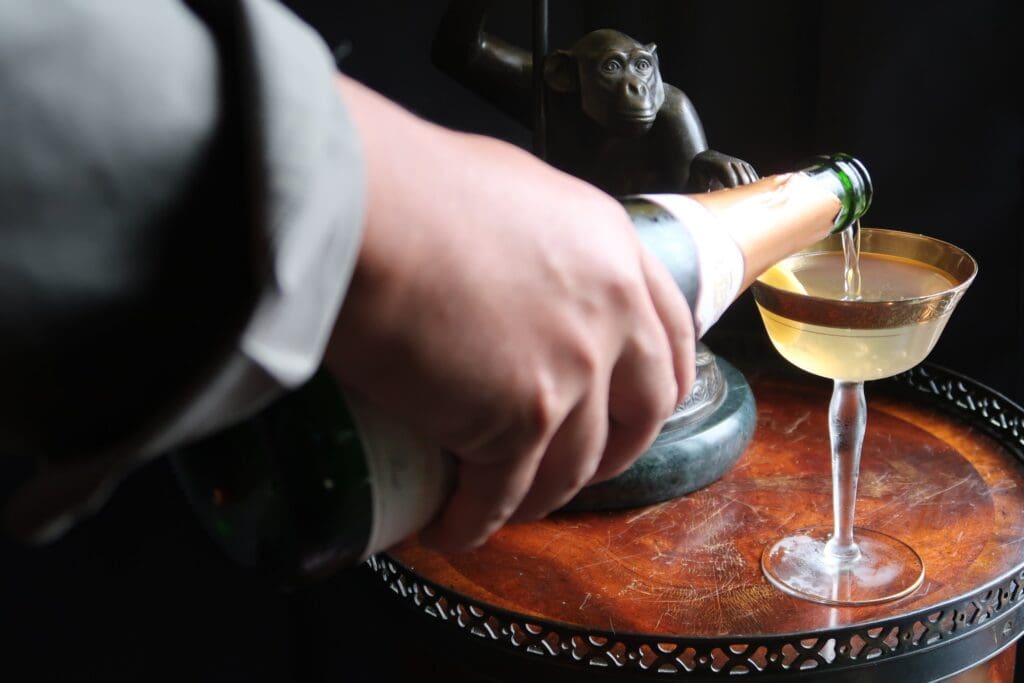
When you’re a kid, you get excited to dress up on Halloween, when you’re an adult, you’re excited to drink on Halloween. We’ve seen the grape-as-the-eyeball and berry juice as fake bloody shtick before, so we found some recipes to help bring a little bit of an elevated vibe to your halloween soirée. Here are some of our favorite spooky cocktails to sip on, whether you’re drinking them at a Halloween blowout or sitting on the porch waiting for trick-or-treaters. Cheers to a fun and safe holiday!
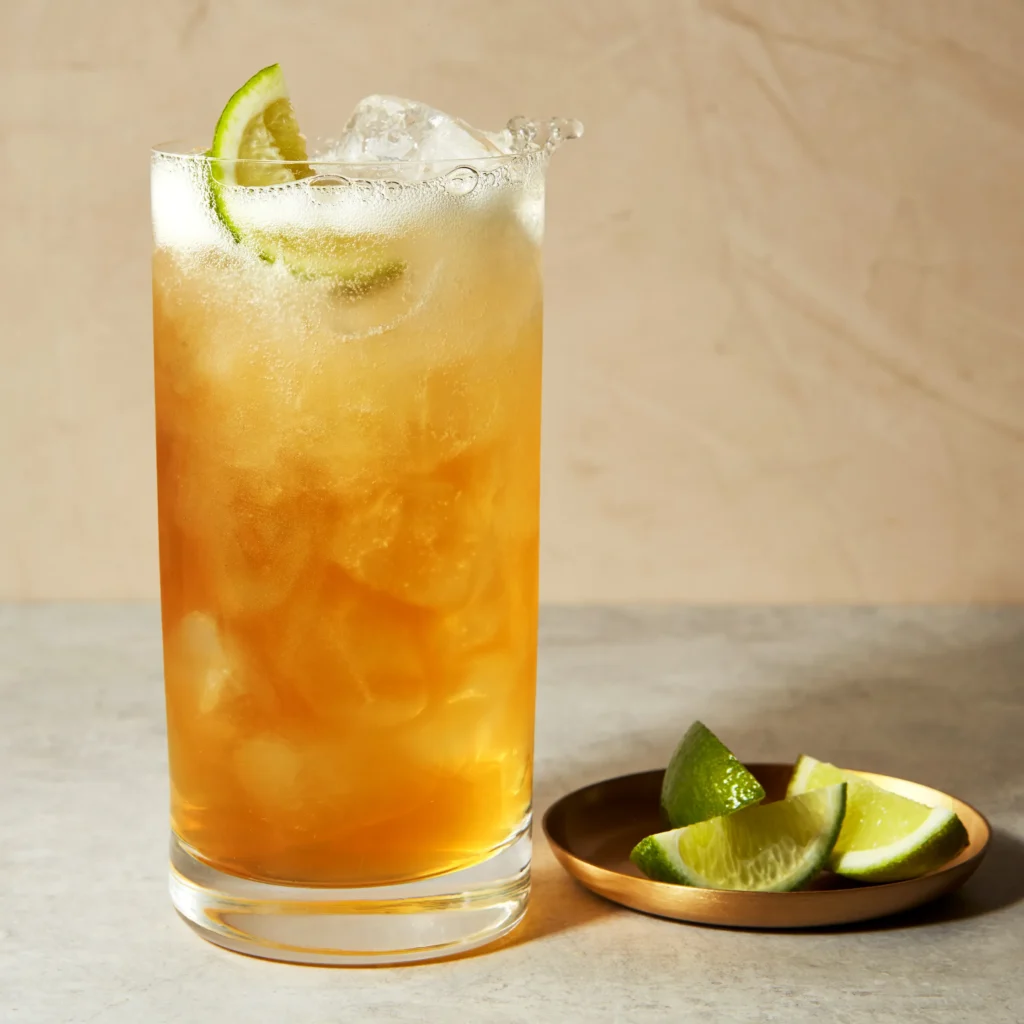
Dark and Stormy
This year, we’re changing the meaning of “It was a dark and stormy night.” This cocktail is a caribbean twist on a moscow mule, swapping the vodka for dark rum. It’s easy to make and delicious to sip on. Here’s how it’s made:
- In a cocktail shaker, add a shot of rum and a half ounce of lime juice.
- Shake well and strain into a tall glass with fresh ice.
- Top with 3 ounces of ginger beer and a lime wheel for garnish.
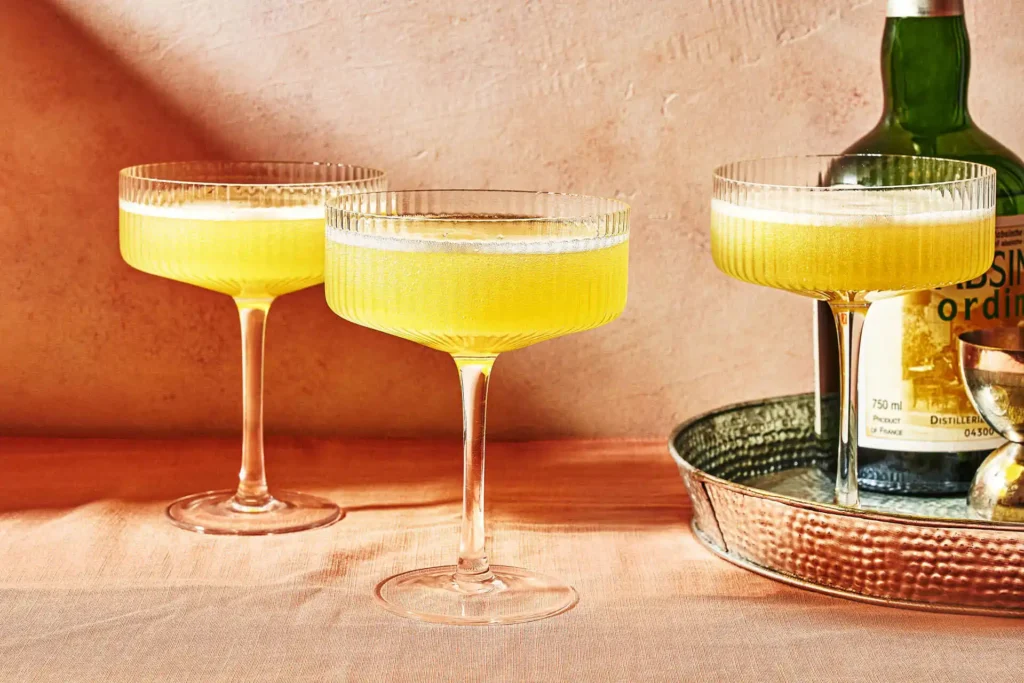
Death in the Afternoon
A favorite of Ernest Hemmingway, unless you happen to have absinthe and champagne hanging around the house, this one might require a trip to the liquor store. The drink is potent, but simple. Here’s Hemmingway’s recipe:
- Pour a shot of absinthe into a glass (a couple glass is perfect).
- Top with 4 ounces of chilled champagne.
- Enjoy!
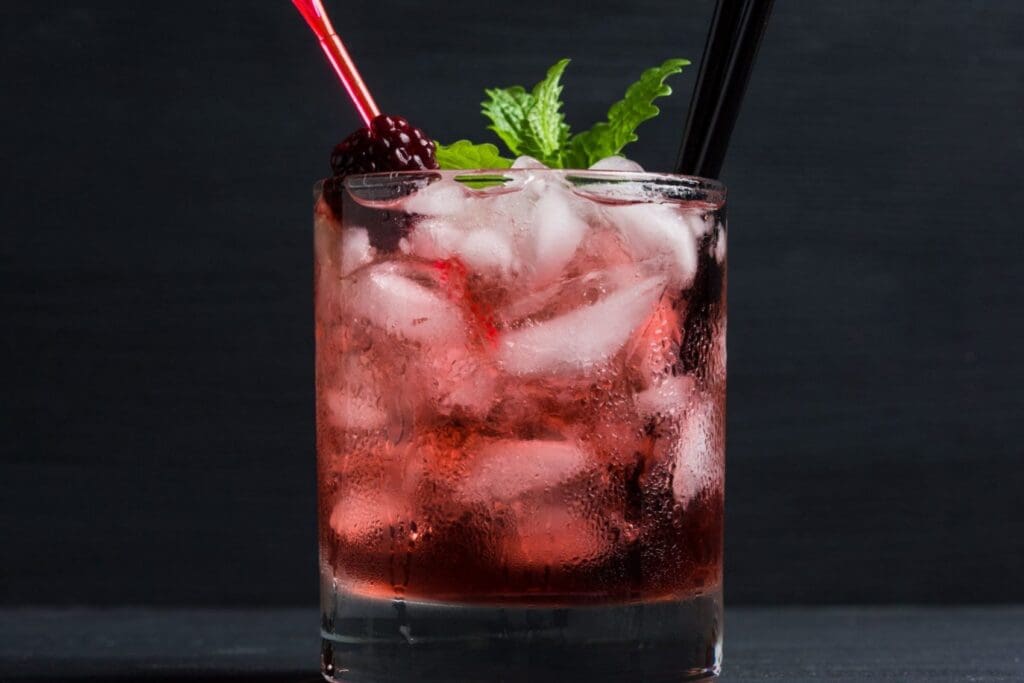
Black Widow
Ready to embrace your inner mixologist? The Black Widow is a cocktail you can impress with, and if you’re a margarita fan, you’ll love this fruity spinoff.
- In a shaker, muddle 3 basil leaves and 2 blackberries.
- Add a shot of tequila, an ounce of lime juice, a dash of agave nectar shake.
- Strain into a stemless cocktail glass with fresh ice.
- If you’re feeling fancy, garnish with a basil leaf and blackberry.
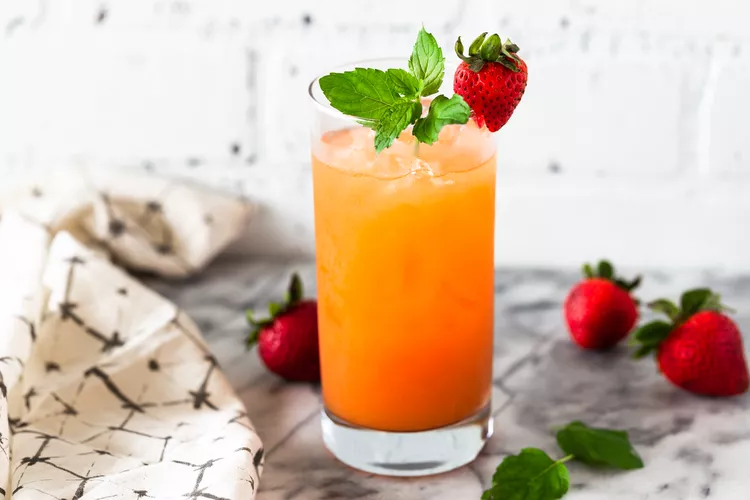
Zombie
Feeling tropical this fall? The Zombie is your new favorite Halloween tradition. Rum, pineapple juice, citrus and passion fruit makes for a sweet, tasty drink.
- In a shaker, add an ounce of light, gold, and dark rum, pineapple, lemon, and lime juice.
- Add an ounce of passion fruit syrup, a dash of aromatic bitters, and shake.
- Strain into a tall glass with fresh ice and garnish with mint.
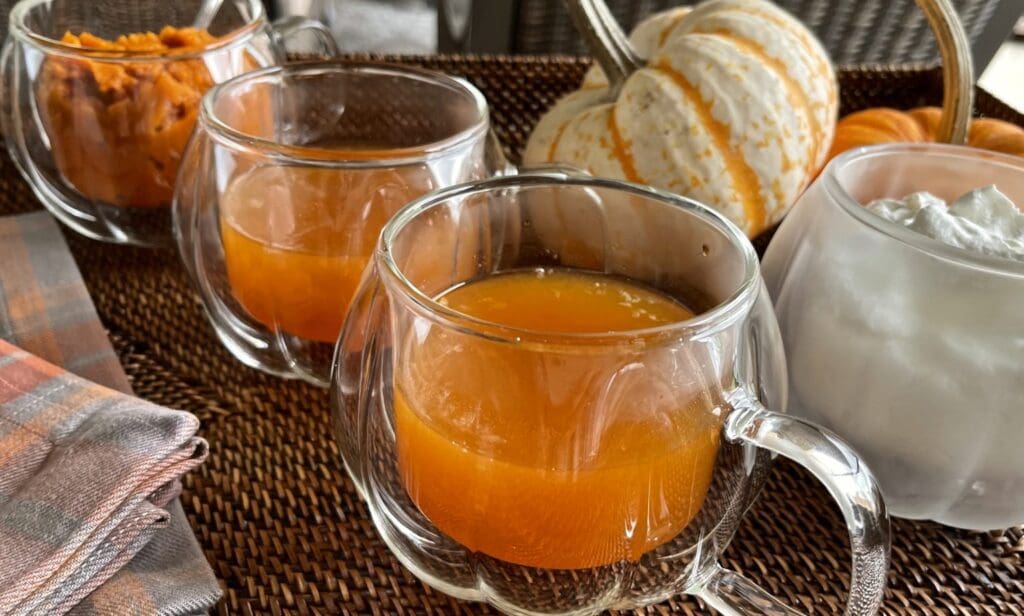
Pumpkin Toddy
Need something warm to sip on while you wait for trick or treaters? The Pumpkin Toddy is your new best friend. Here’s a good recipe:
- In a pre-heated mug, add an ounce of apple brandy and an ounce of whiskey.
- Add a half ounce of lemon juice and maple syrup, and a teaspoon of pumpkin purée.
- Add 2 dashes of Angostura bitters.
- Top with 5 ounces of boiling water and stir.
- Garnish with cinnamon, and enjoy!
Have your own favorite Halloween beverage? Let us know in the comments section what we should be drinking this fall!
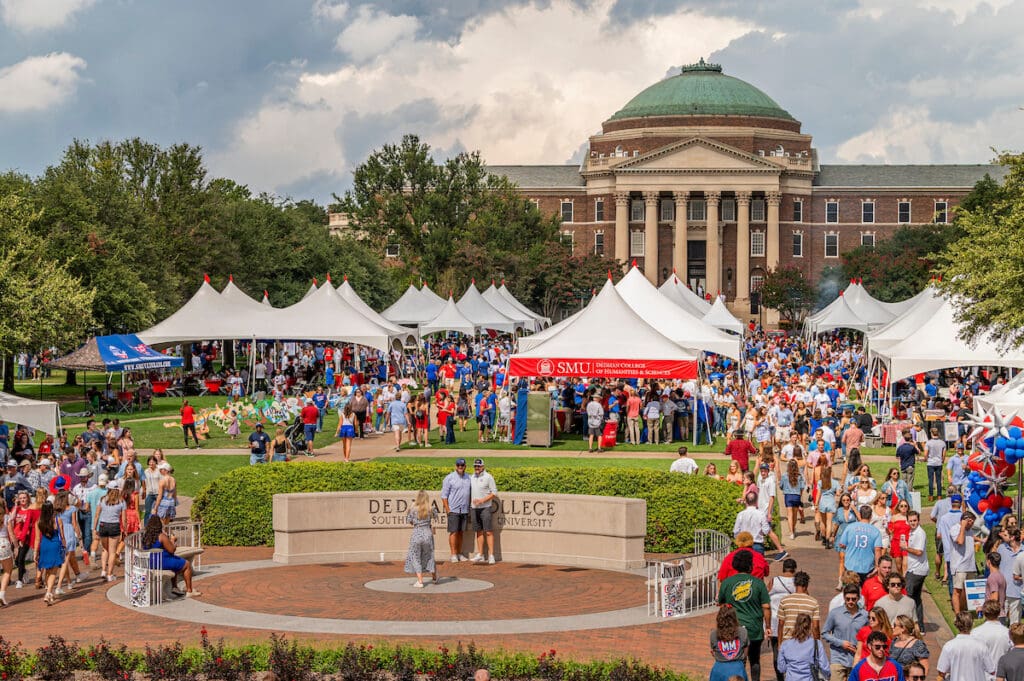
Right up there on the list of American icons with the 4th of July and cherry pie has got to be college football. And now that fall is here– your school’s team likely recently celebrated or is gearing up for their Homecoming Weekend. Sure, everybody tailgates and has one too many, but we wanted to do a deeper dive into the homecoming traditions that keep alumni coming back to relive their glory days year after year. Here are some of the best ones we’ve seen.
Virginia Tech – Running the Game Ball
Can’t have a kickoff without the ball! At Virginia Tech, the game ball has a special rite of passage. Over the course of the week leading up to their homecoming game, the ball to be used at kickoff is raced around campus like a relay baton by Army ROTC students from the Ranger Company. 100 miles in total, the tradition gives students and faculty a chance to touch the game ball as it’s paraded by, building anticipation in the community for the big game.

Penn State – Guarding the Lion Shrine
Nothing says Homecoming like a spirited rivalry. At Penn State, they’re not messing around. The legend goes that in anticipation of a game against Syracuse University, some rival fans doused the Penn State Nittany Lion statue in orange paint. In an effort to make sure that their beloved mascot wasn’t vandalized ever again, students began guarding the statue before every homecoming. The tradition has become more of an event in recent years with a festival and musical acts, but the roots make for a pretty great story.
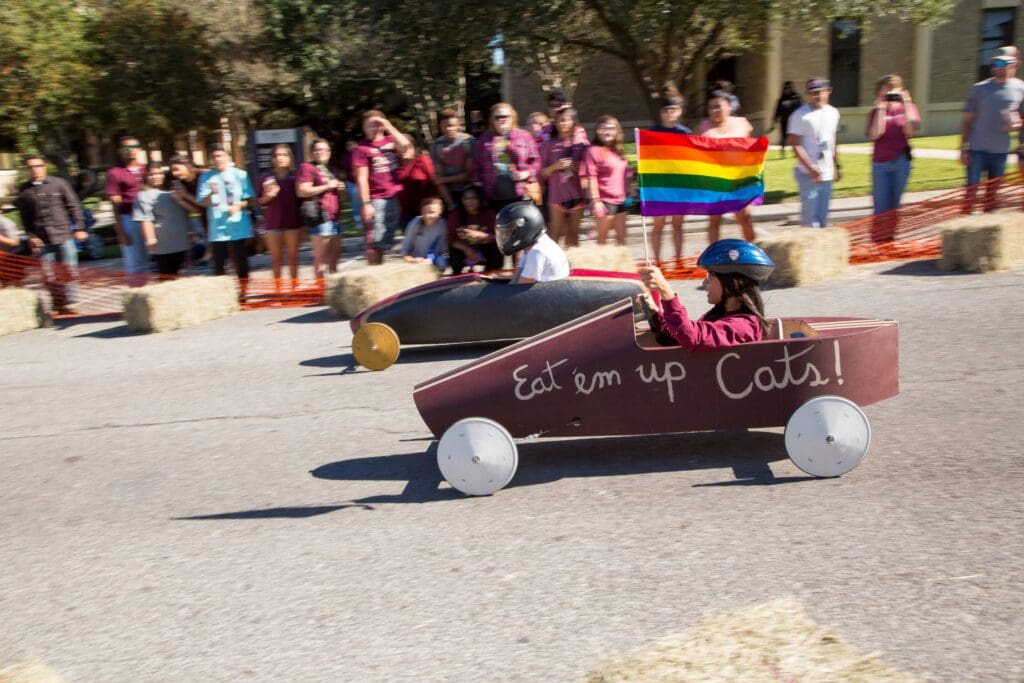
Texas State – Soap Box Derby
Calling all Boy Scouts! At Texas State, you can relive your pinewood derby glory days every homecoming with the annual Soap Box Derby. The event dates back to the 60s, where students built their own cars and raced them down a hill on campus. It looks damn fun– just don’t drink and ride!

Miami – Boat Burning
Sure, everybody has a bonfire. But at U Miami, it’s a boat. Every year, students and alumni of the U gather at Lake Osceola for their homecoming tradition– and if the boat sinks into the lake before the ceremony ends, it’s said to be a sign that the football team will win the homecoming game! We love a good superstition.
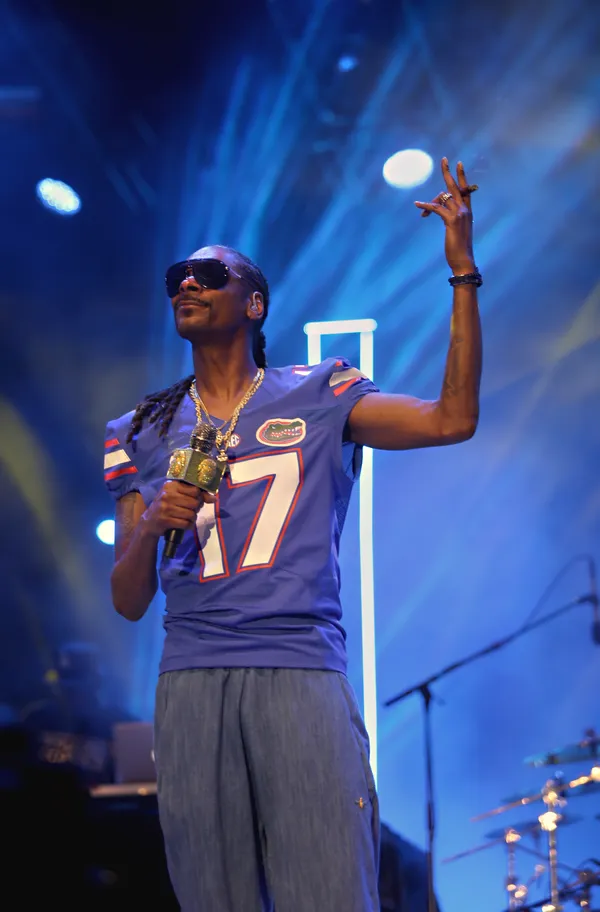
Florida – Gator Growl
Sticking in the sunshine state, for the last 100 years, the university of Florida has been putting on arguably the biggest homecoming party in the nation. The student-run pep rally “Gator Growl” has been headlines by some of the biggest names ever: from comedians like Jerry Seinfeld and Robin Williams, to musical acts like Snoop Dogg and Jason Derulo, it’s a can’t miss event if you find yourself in Gainesville this fall.
What’s your school’s big homecoming tradition? Let us know in the comments section, we might have to swing by next season!
If you’ve been on Instagram Reels recently, you will know that the Honey Deuce, the Official Cocktail of the U.S. Open, has become the focal point of the new York Tennis Tournament this year. Said to generate upwards of $10 million per tournament, there must be something special about this cosmo-esque concoction in the classic Grey Goose glass. Why has this simple yet enticing cocktail gone viral this year, what makes the US Open Cocktail so popular, and how can you make a Honey Deuce Cocktail at home? We’ve got all the answers for you.
What is in the Honey Deuce Cocktail?
The Honey Deuce is a fun spin (no pun intended) on a refreshing vodka-lemonade cocktail, perfect for those early summer days. The recipe consists of Grey Goose (Who sponsors the tournament, so you’ve got to use their vodka for the real thing), fresh lemonade, raspberry liqueur and three honeydew melon balls as a garnish, which are a not-so-subtle but cute nod to the tennis theme.
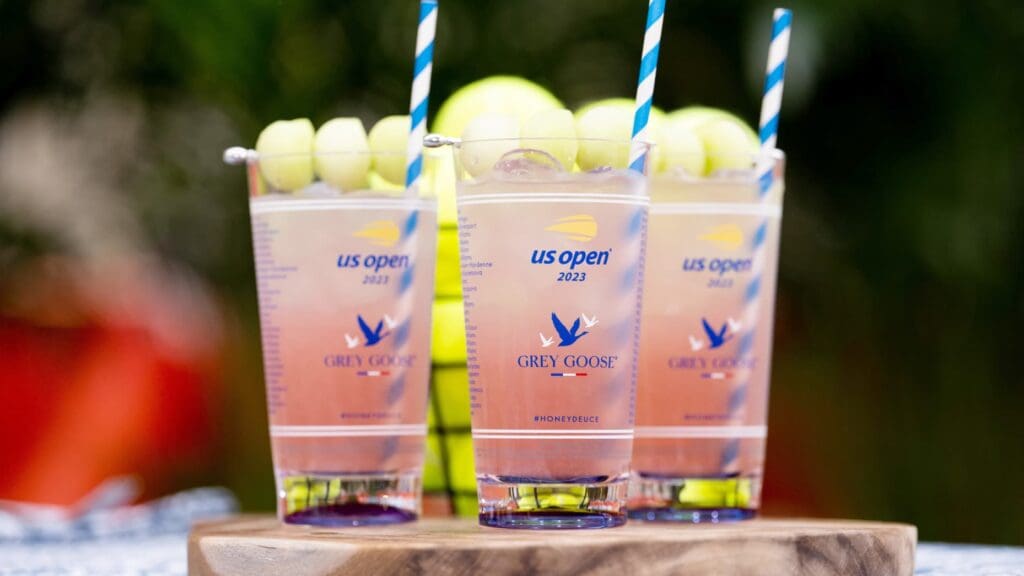
Why is the Honey Deuce Cocktail so Popular at the U.S. Open?
In recent years, the US Open Cocktail has become a staple of the US Open experience for New Yorkers and Out-of-towners alike. Since the Early weeks of September are often hot in New York, the cocktail is a refreshing combination to help beat the heat. The Honey Deuce is pretty easy to prepare, and with crowds getting larger and larger at the U.S. Open every year, you’ll need as much time as you can to enjoy the match.
How Many Honey Deuce Cocktail Are Sold At the U.S. Open Every Year?
According to Grey Goose, over 450,000 HOney Deuces were sold at the U.S. Open in 2023, and they have sold over 2 Million since 2011. That’s a lot of cocktails!
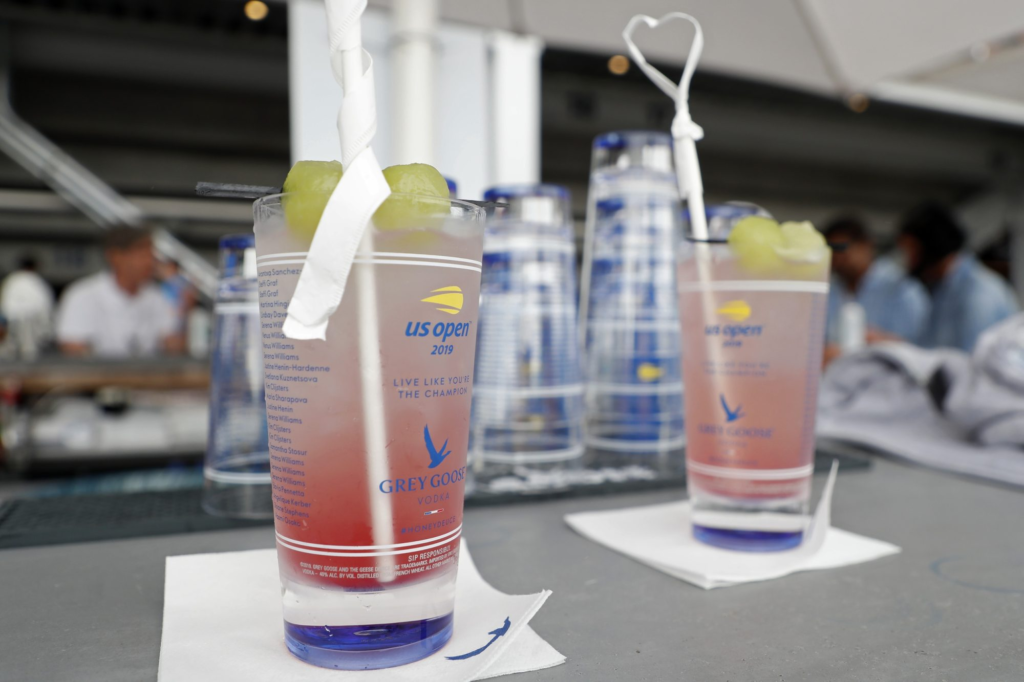
How Much Does a Honey Deuce Cocktail Cost at the U.S. Open in 2024?
This year, the Honey Deuce will run you $23, which is a slight increase from previous years. At least you get to keep the cup!
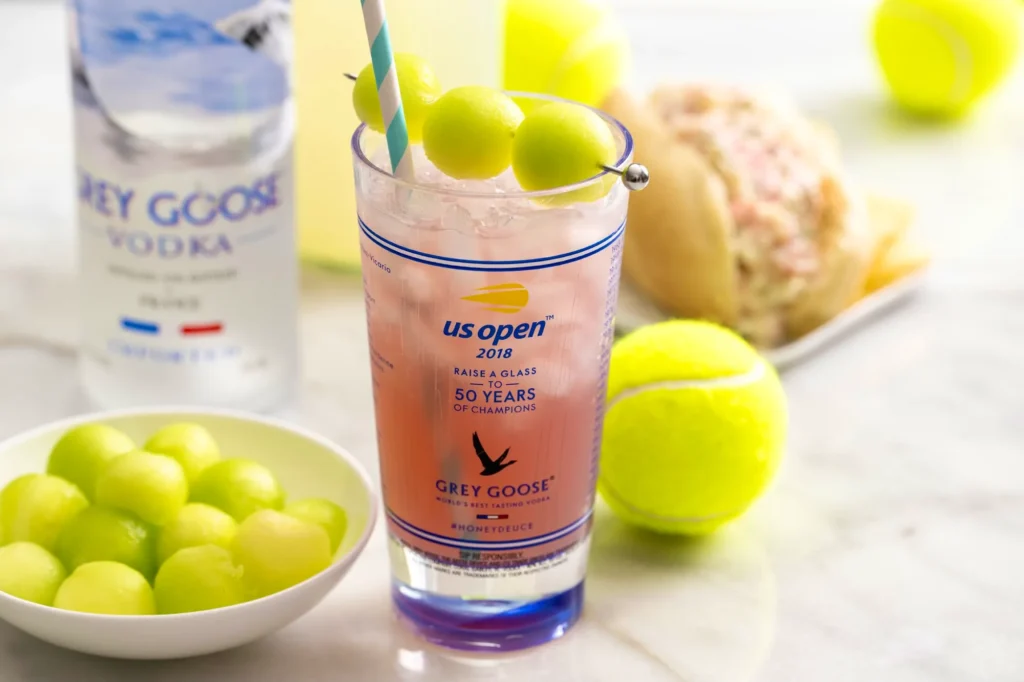
What is the Recipe for the Honey Deuce Cocktail?
Since Grey Goose is the official supplier of the cocktail, we’ll give you their recipe:
You’ll Need:
- 1 1/4 oz Grey Goose Vodka
- 3 oz Fresh Lemonade
- 1/2 oz Premium Raspberry Liqueur (we like Chambord)
- 3 Honeydew Melon Balls
Directions:
-Fill a chilled Highball glass with cubed ice and add Grey Goose Vodka
-Top with Fresh Lemonade and Raspberry Liqueur
-Garnish with 3 Honeydew Melon Balls and serve!
Have you tried this infamous tennis-themed cocktail? LEt us know if you think it lives up to the hype
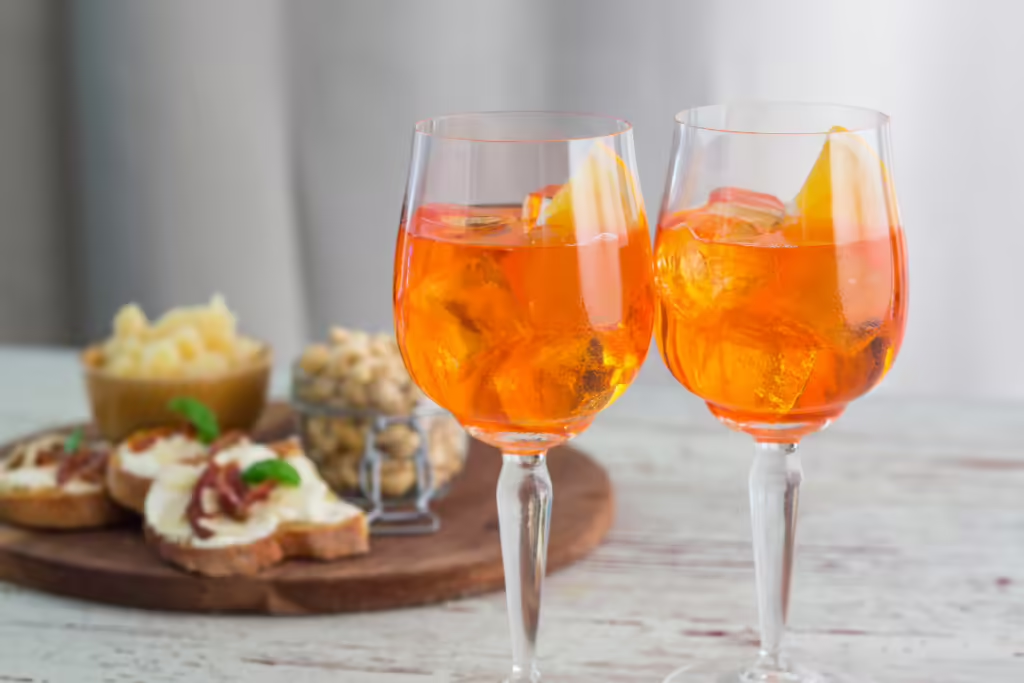
If you’ve spent much time at a cocktail bar (or scrolling Instagram reels) in recent years, you’ve likely come across a drink called a spritz. But what are they, and why are they so popular? Let’s expand your horizons and dive into the world of Italian cocktails!
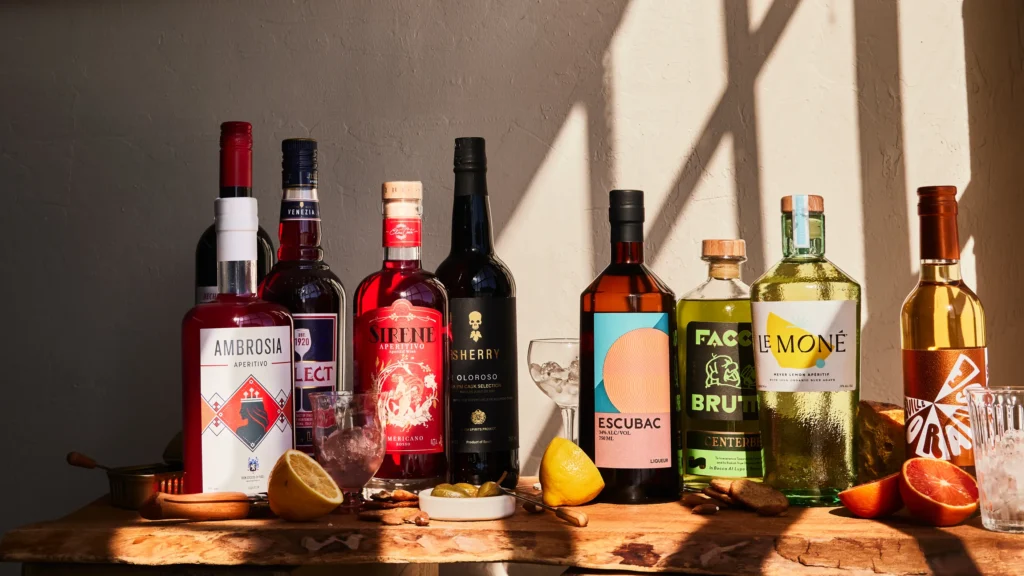
What is a Spritz Cocktail?
At its most basic, a spritz is a cocktail made with sparkling wine, an aperitif (check out our bartender encyclopedia if you want some more info on that category of booze), and ice! Super simple, super refreshing, and a fun order for sitting at a pool or a patio in the summertime.
Because of this framework for their recipes, they’re typically lower ABV than other cocktails, but still have the bitterness, complexity, and visual intrigue of other popular drinks.
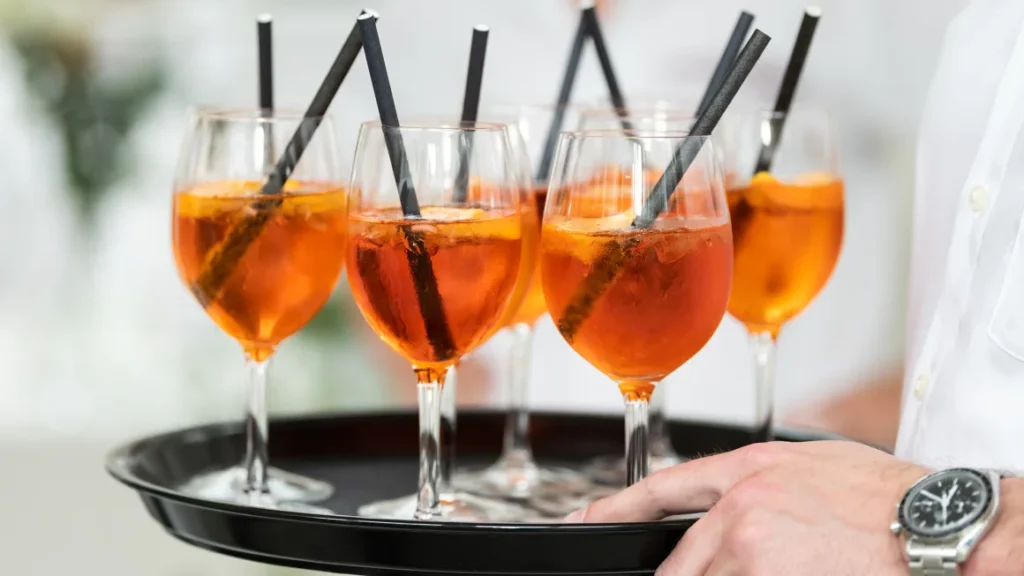
Why are Spritz Cocktails so Popular?
In the last few years, the number of people sipping on spritzes has exploded. If you ask us, it’s because of the lower ABV, plus the fact that it’s a fun, sophisticated summer drink. Something tasty to drink without getting hammered at your backyard cookout or rooftop bar? Count us in.
Plus, with the viral potential of TikTok, the drinks have garnered millions of views. Not a bad way to end up on the cocktail menu of every establishment with a liquor license.
When were Spritz Cocktails Invented?
The origin story for the spritz takes place in Northern Italy a few hundred years ago, when the occupying Austrians modified the heavy local wine by adding some sparkling water. The Italians of course found this new combination too light, and started adding more booze to it (like Aperol or Campari) and boom, a classic was born.
How to make a Spritz Cocktail
When making a spritz, remember the 3-2-1 ratio. Most spritzes take 3 parts wine, 2 parts aperitif, and 1 part sparkling water. From there, you can follow a recipe, or just use what you have on hand to make a refreshing summer drink!
No need to use your nicest wine for these cocktails either. A cheap prosecco is perfect for mixing, and won’t break the bank.
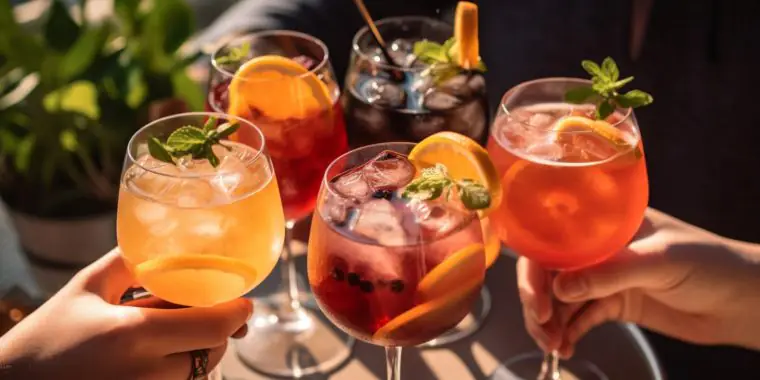
Popular Spritz Cocktails
You’ve likely heard of an Aperol Spritz, but here are some other popular variations you might find at your local bar:
- Negroni sbagliato
-
Campari Spritz
- Venetian Spritz
- Hugo Spritz
- Limoncello Spritz
Of course, every bartender will have their own variations of the spritz. Have you tried one you really loved? Let us know what you ordered in the comments, and we’ll be sure to give it a shot!
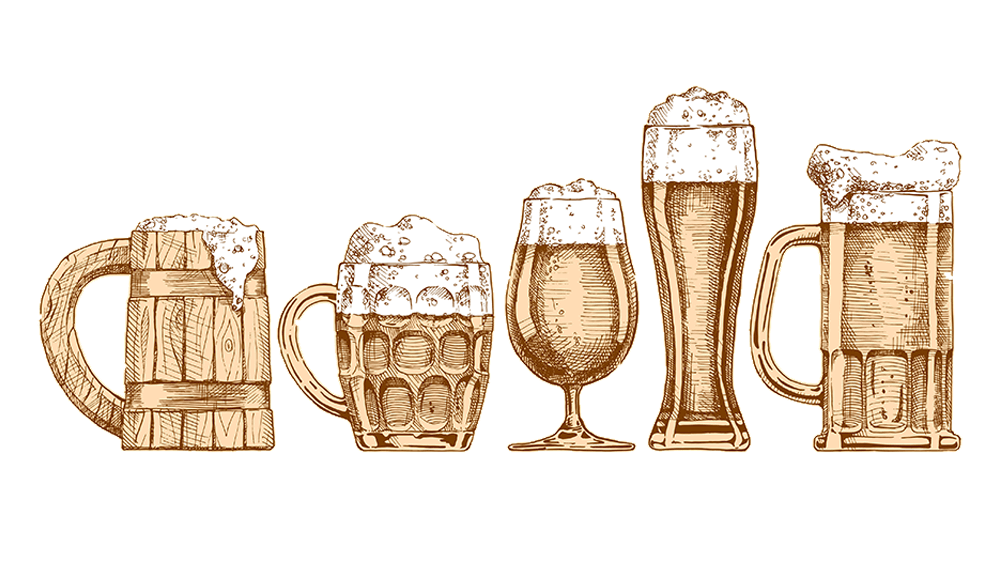
Throughout human history, people have been drinking beer. Curious about the origins and growth of the most widely consumed alcoholic beverage in the world? Keep reading.
When was beer invented?
The short answer? A long, long time ago. Essentially, as soon as humans started growing grain, they were making beer, so it’s safe to assume that when humankind started to move away from hunting and gathering and more toward agriculture, beer was around. Because it’s been around so long, the first civilizations in Mesopotamia are often credited as being the birthplace of beer.
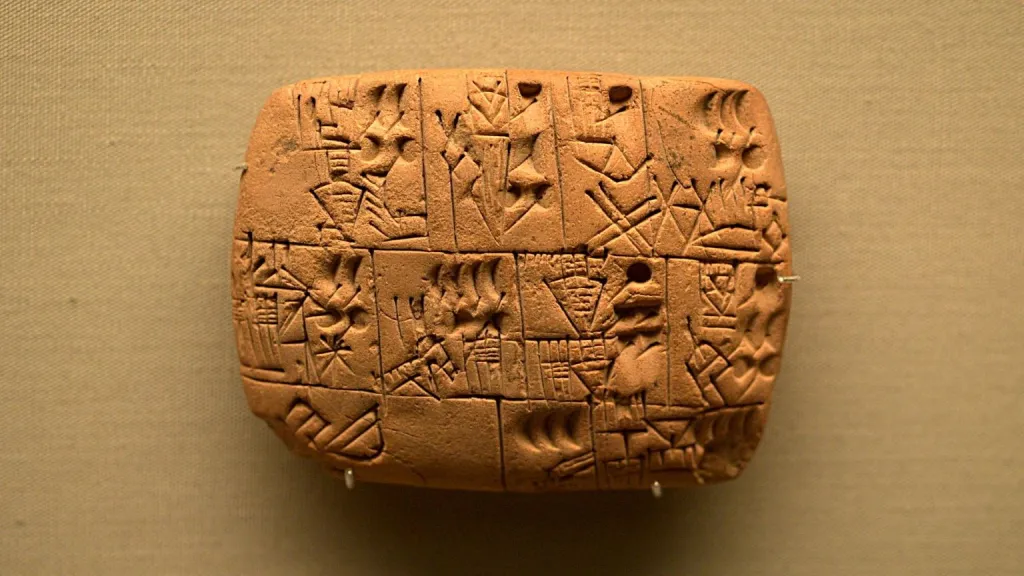
How was Beer Invented?
Experts on the topic say that it’s more likely that beer was discovered, rather than invented. The theory is that ancient people were making bread with barley, mixed it with water, and with the addition of wild yeast it became a sort of prototype for the beer we know today. Over time, they tweaked the recipe, made it better, and it became an instant hit, beloved by Pharaohs, monks, and regular-old Mesopotamians alike.
Who Drank Ancient Beer?
After its discovery, beer became extremely popular in ancient Egypt, and Greece (our kind of people). It was even used as a form of payment for workers and soldiers. Eventually, its popularity spread to the rest of Europe where it became a mainstay in the middle ages thanks to the monks that helped produce it.
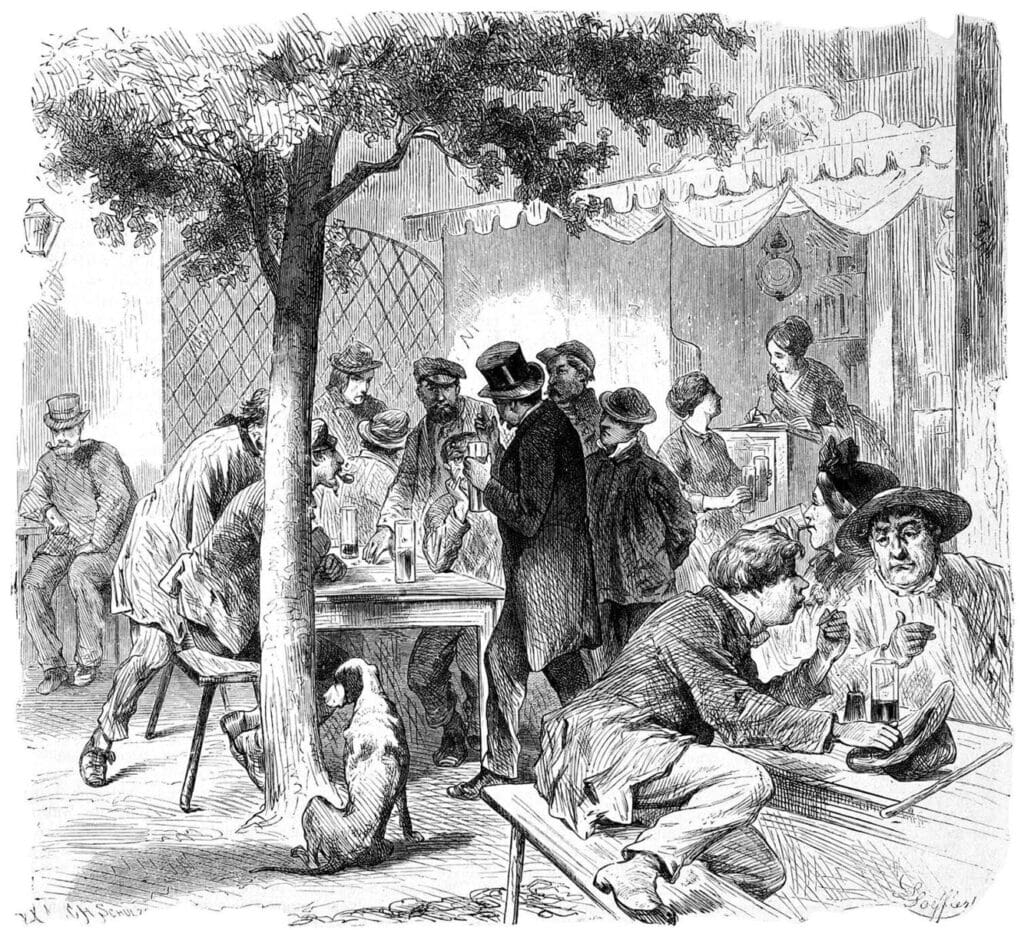
When did Beer Come to America?
From the very beginning of U.S. history, beer played a part. Thanks to its popularity in England, the first colonists in America brought beer with them, and often built a brewhouse as a necessity before schools or churches because the brewing process made water safe to drink.
Your favorite founding fathers also loved beer. George Washington was known to operate a home brewery at Mount Vernon (his recipe included molasses), and gave every member of the continental army a ration of beer every day. Thomas Jefferson wrote the first drafts of the Declaration of Independence in a tavern. James Madison even wanted to add ‘Secretary of Beer’ as a new position to the presidential cabinet.
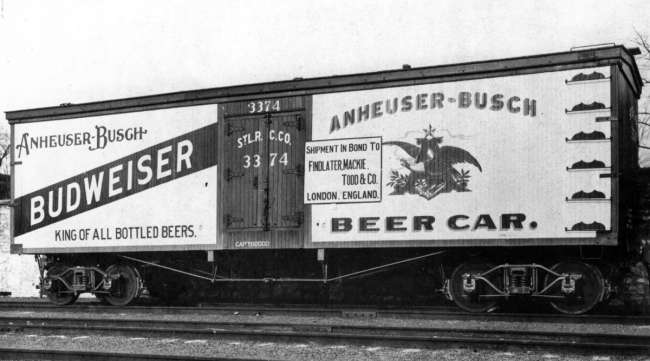
How did Popular American Brewers Get Their Start?
In the mid 1800s, the country saw a rise in German immigrants, who brought their beer recipes with them. One recipe, the lager, grew to dominate the American beer scene. In Milwaukee, St. Louis, and Cincinnati, names you might recognize like Busch, Pabst, and Schlitz began their brewing operations. Eventually, Prohibition shut these beer makers down, but shocker, they made it through and are still producing today.
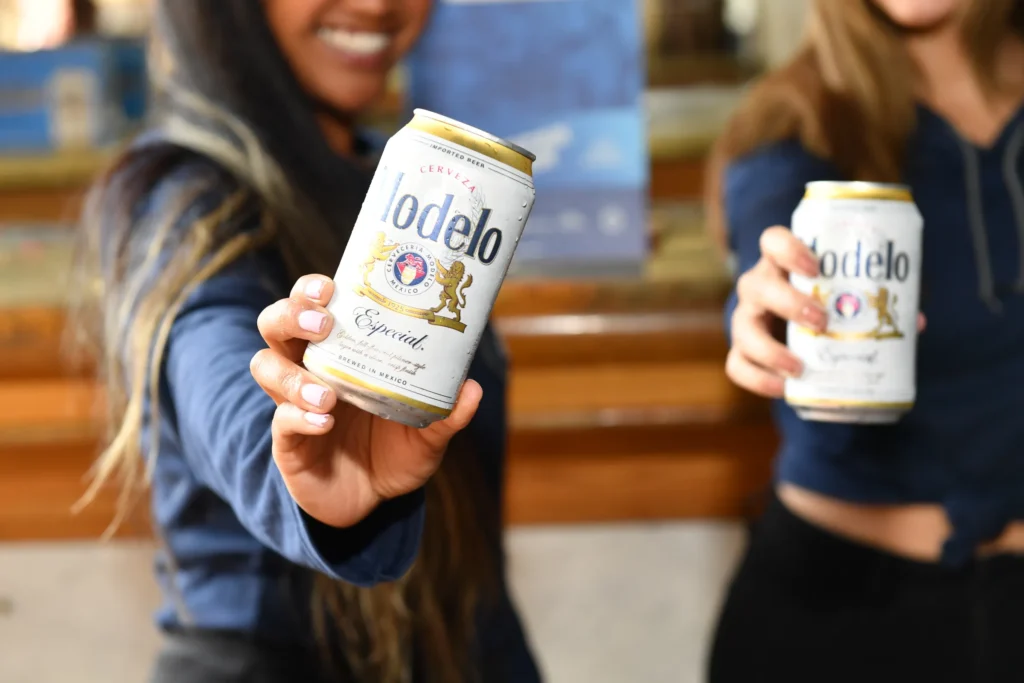
What are the Most Popular American Beers today?
As of last year, Modelo and Bud Light were the two most popular beers in America, with Blue Moon, traditional Budweiser, and Heineken close behind. Modelo took the top spot for the first time ever, dethroning Anheuser-Busch, which between Budwesier and Bud Light had been at the top of the list since the 1960s.
What is the American Beer scene like today?
While globally, American beer might be overshadowed by the giant brewers that have exploded internationally (think: Budweiser, Miller, Coors), in the 21st century, the country has seen a rise in smaller operations and craft brewers that are making some really great stuff. With craft breweries at an all time high in the country, and ranging from coast to coast, the number of people who are after something a bit more unique than a Bug Light have been growing too.
Any way you slice it, beer has been a part of human history for as far back as we have record. From the ancient people of the Middle East to the household names in American beer today, the drink sure is a people pleaser. Have a favorite fun fact about beer? Leave it in the comments before you go!
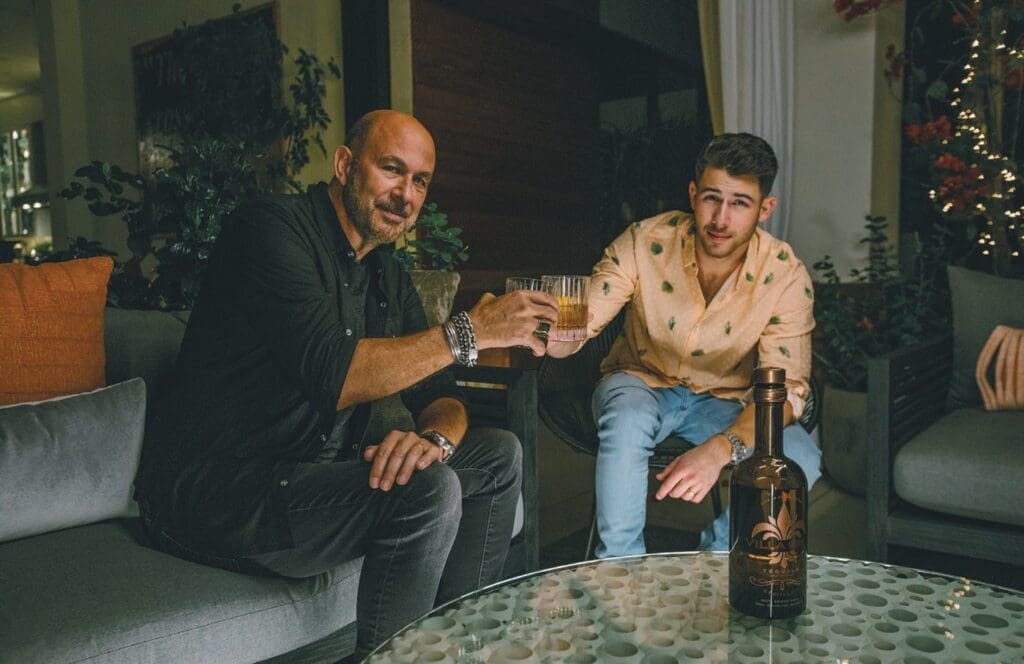
Tequila, the life of the party’s drink of choice, is evidently also the go-to for many celebrities. Famous people trying to sell us alcohol is nothing new, but in the past decade or so, we’ve seen an exponential rise in celebrity-owned tequilas and Tequila brands.
If you’re like us and are having a hard time keeping them all straight, here’s a rundown of who’s who in the tequila space.
Which Celebrities Have Tequila Brands?
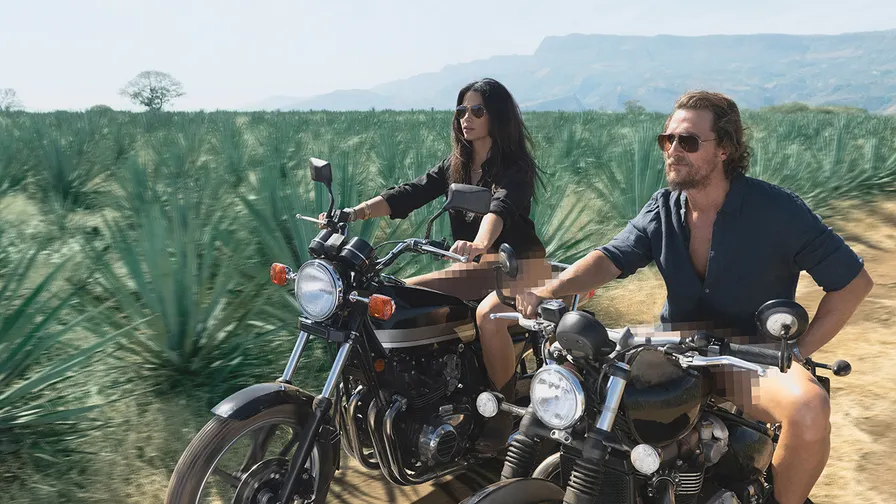
Matthew McConaughey
One of the newest players in the tequila game, MConaughey and his wife Camila started Pantalones Tequila in 2023 and kicked it off with a bang. The movie star is no stranger to the world of alcohol, but was a free agent, after ending his long standing relationship with Wild Turkey whiskey in 2022.
Kevin Hart
Gran Coramino, the funnyman’s latest business venture, launched in 2022 in partnership with Jose Cuervo CEO, Juan Domingo Beckmann. In its short lifetime, the brand has already inked partnership contracts in the sports world with the Philadelphia Eagles and Atlanta Hawks, so maybe it will stick around for a while? Only time will tell.
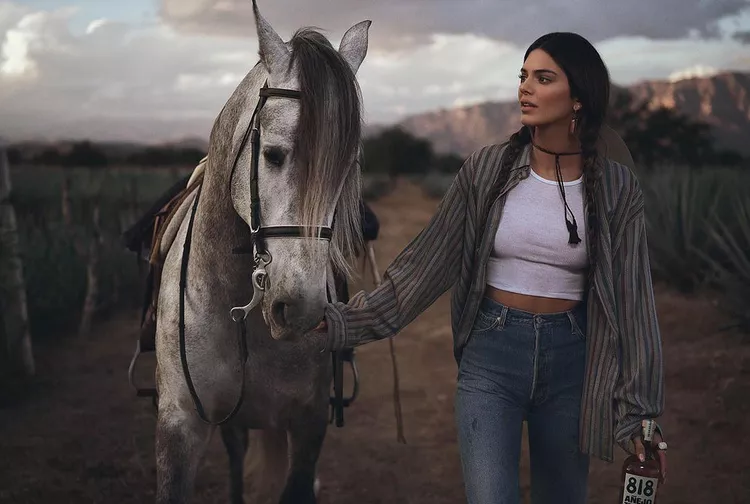
Kendall Jenner
One of the youngest celebs on this list, Jenner’s 818 Tequila brand burst onto the scene (not without some controversy) in 2021. Since then, the Kardashian has been marketing the brand by going to college towns and pouring shots of it herself, making 818 one of the most famous tequila brands amongst gen z and millennial drinkers.
Thomas Rhett
Country music isn’t all trucks and beer! ACM entertainer of the year Thomas Rhett launched Dos Primos Tequila (with his cousin, of course) in 2021. As far as celebrity brands go, it’s been well-received, earning multiple awards at the San Francisco World Spirits Competition in 2023.
George Strait
Nearly a decade ago, the country star became a cofounder of Código 1530 Tequila which has since been acquired by alcohol giant Pernod Ricard (think Jameson, Absolut, Kahlúa). Despite being a smaller craft operation, the King of Country stands by his product: “If it’s not your favorite, you haven’t tried it!”
Lebron James
Lobos 1707 was founded in 2020, and shortly after, King James became an outspoken early investor (he even had a Lobos-sponsored party when he broke the NBA scoring record). The brand is on the higher end of celebrity-endorsed booze when it comes to price, but has been sweeping award shows in recent years.
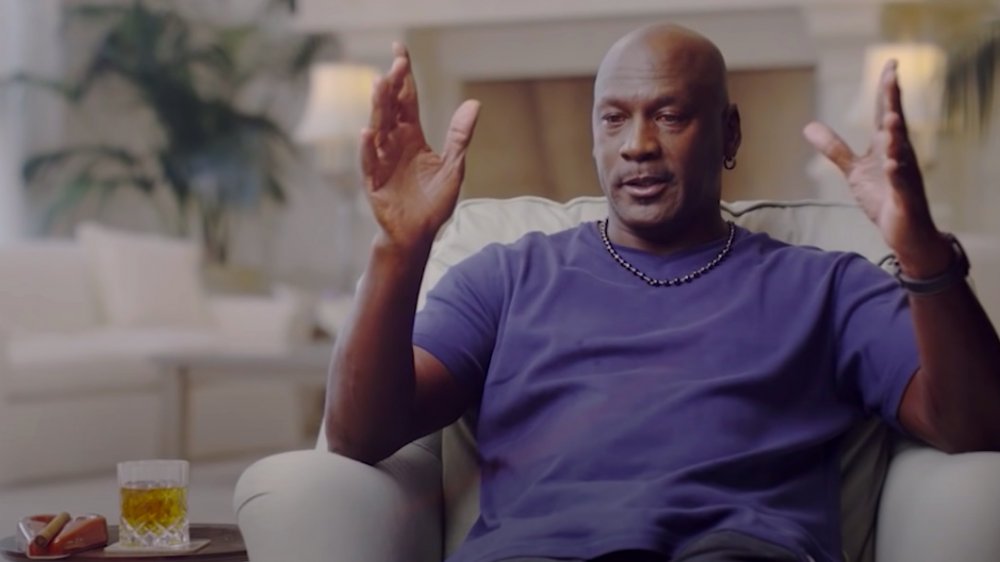
Michael Jordan
Didn’t you know it’s illegal to mention LeBron James without also mentioning Michael Jordan? His Airness became a cofounder of Cincoro Tequila (back when he was still an owner of the Charlotte Hornets) along with 4 other NBA team owners. And not unlike his legendary basketball career, Jordan’s rumored to be ultra-competitive with his tequila business, even taste testing every batch to make sure it’s right. Oh, and bottles can be as expensive as $1800.
Dwayne Johnson
The Rock founded Teremana in 2020, and since then it has become one of the fastest growing tequila brands on earth. It’s won some awards along the way, all despite being one of the most affordable celebrity tequila brands. Not bad Dwayne, not bad.
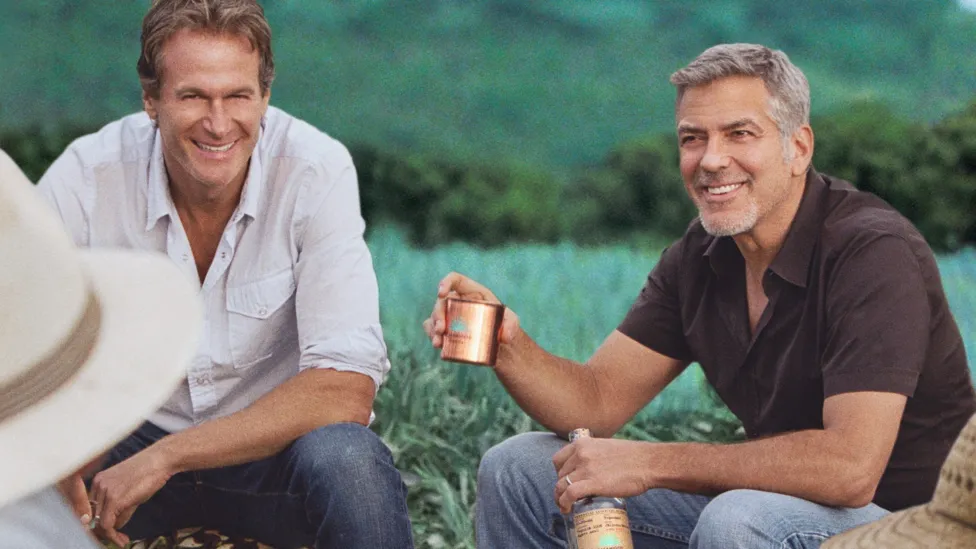
George Clooney
Perhaps the most famous celebrity tequila brand on the list, Clooney started Casamigos Tequila in 2013 with his friend and businessman Rande Gerber. The brand took off, and in 2017, Clooney and company cashed out to the tune of a billion dollars. Nowadays, he’s making wine. No, really.
Eva Longoria
One of the few names on this list with family ties in Mexico, Longoria started her brand Casa Del Sol in 2021 with the goal of uplifting women in the industry and taking the emphasis away from celebrity names and back onto the liquid in the bottle. A noble cause for a delicious drink.
The Chainsmokers
With the goal of targeting the Instagram generation, the Chainsmokers (known in real life as Alex Pall and Drew Taggart) became co-owners of JAJA Tequila in 2018. The move partnered the duo with JerryMedia founder Elliot Tebele, who has since come under fire for his role in the famously failed Fyre Festival, as well as his history of stealing digital content without permission. Despite the controversy, the brand has been successful, winning awards and taste tests alike.
Adam Levine & Behati Prinsloo
This celebrity couple started their brand, Calirosa, in 2021 and have since called it their “third baby.” Their tequila is aged in wine barrels, giving it a distinct light pink color, and inspiring the name. Levine of course is no newcomer to the industry, in 2017 he partnered with Sammy Hagar to create their own Mezquila (yes, that’s tequila mixed with mezcal).

Nick Jonas
Founded with co-creator John Varvatos in 2019, Villa One is made in Mexico by Arturo Fuentes, a man dubbed the ‘Godfather of Tequila.’ Nicknames don’t get much more badass than that. Plus, Jo Bro superfans can get a bottle with a complimentary signed hat on the Villa One website.
Mark Walhberg
Flecha Azul is Marky Mark’s contribution to the world of tequila. Launched in 2020 with co-owners Aron Marquez and Abraham Ancer, the brand adds to Wahlberg’s growing portfolio outside of the world of entertainment that already includes fast food, apparel, and fitness.
Rita Ora
Singer Rita Ora launched her brand Próspero Tequila in 2019 in the US, and shortly after expanded across the pond to her home in the UK. The brand is not only women-owned, but women-made by Stella Anguiano, one of Mexico’s leading distillers. Girl power!
AC/DC
They had beer, they had wine, they had an energy drink, and in 2016 the world-famous rock group launched Thunderstruck Tequila, because, why not? Unsurprisingly, the line has been phased out, but superfans can still find bottles online if they want to add to their memorabilia collection.
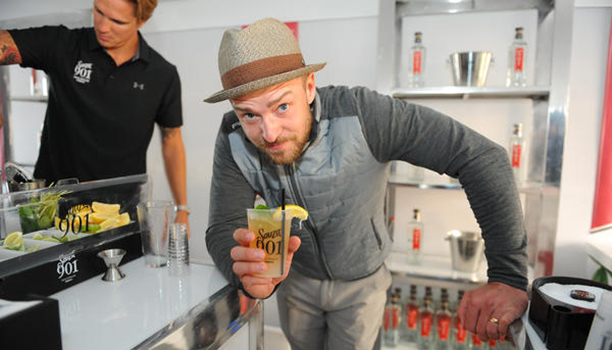
Justin Timberlake
Launched in 2009 and re-launched in 2014, Timberlake’s brand, Sauza 901, is a nod to his hometown of Memphis’s area code. Where some celebrity brands lack in quality, JT’s doing something right. In 2012 the tequila took home a gold medal in the San Francisco World Spirits Competition.
Why Do So Many Celebrities Have Tequila Brands?
Simply put, tequila is in. Everyone loves a margarita, and everyone knows that, so the rich and famous are dipping their toes into the alcohol market with a product they know people are already thirsty for. In the last year, there have been more celebrities jumping into the gin market, thanks to its rise in popularity.
Did we miss any of your favorite celeb’s tequila brands? Let us know in the comments section, and cheers, to whatever you’re sipping!
From our observations and experience, Tequila shots have become the go-to for liquor shooters across the country in recent years, and we don’t blame them: the liquor’s agave base definitely helps mellow out the bite that a liquor shot inevitably has. But what if tequila straight up is still a bit much for your taste? In this post, you’ll find our top favorite recipes for tequila-based cocktails. We hope you find something you’ll love!
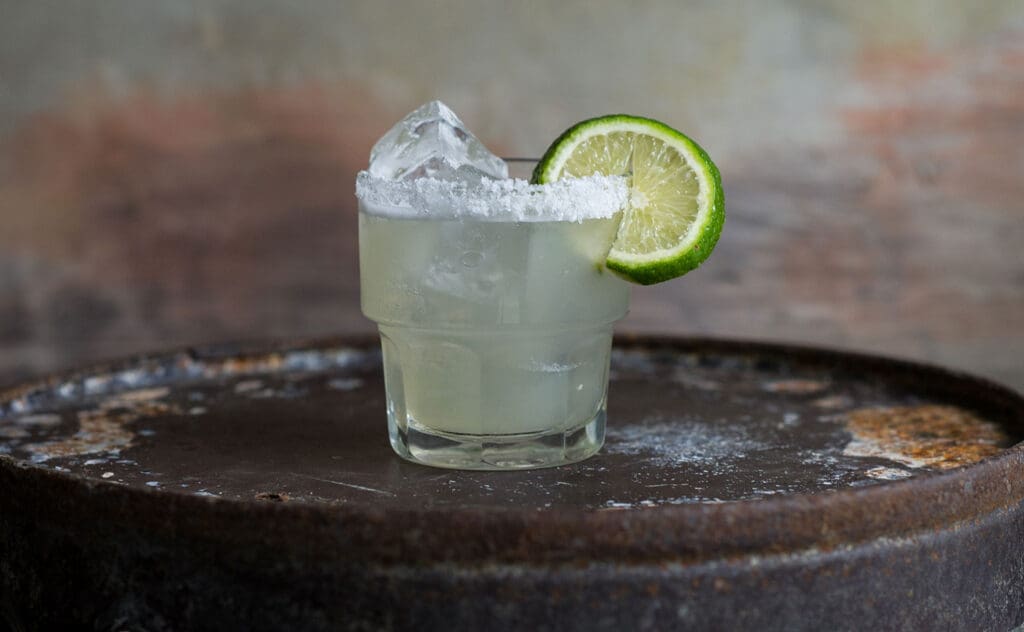
Margarita
Nothing says summer like a margarita on a patio, and generally speaking, one of our favorites for spring and warm weather in general. This is one of the world’s most popular cocktails, so definitely one to have in your mixology arsenal. Here’s our recipe:
- Salt or sugar the rim of your glass, and fill it with ice.
- Mix 1.5 ounces of tequila, an ounce of orange liqueur and some lime juice in a shaker.
- Strain into your glass and enjoy!
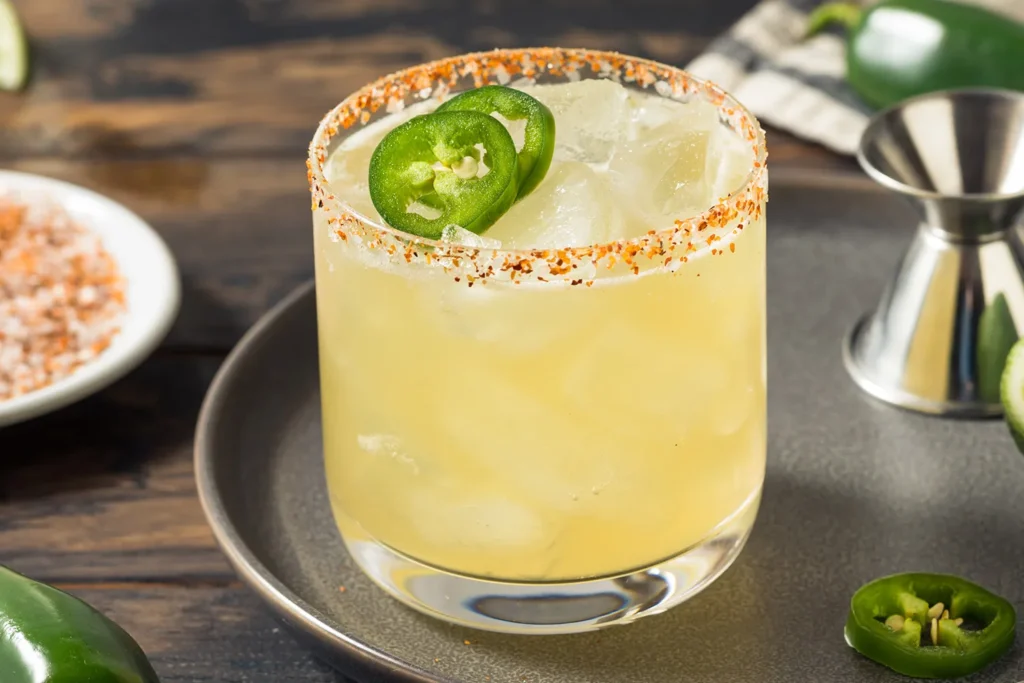
Spicy Margarita
Just like the above, just with an added layer of spice.
- Add tajin and salt to the rim of your glass, and fill it with ice
- Mix 1.5 ounces of Ghost tequila, an ounce of orange liqueur and some lime juice in a shaker. If you don’t have Ghost Tequila, you can add some fresh jalapeño to add some spice.
- Shake, strain and serve!
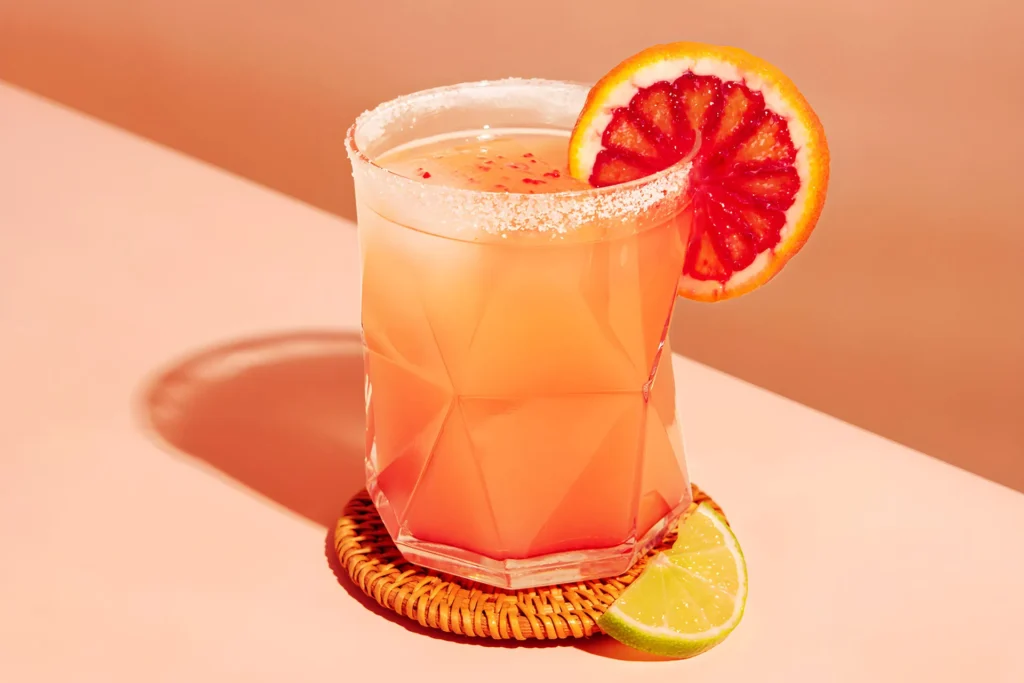
Paloma
Looking for something a little more pink? A Paloma is your best bet. A classic tequila drink, it’s the perfect mix of sweet and citrus. Here’s how it’s made:
- In your shaker with ice, mix 2 ounces of tequila, 2 ounces of grapefruit juice, an ounce of lime juice, and a half shot of agave syrup.
- Pour into a tall glass with ice
- Top with 2 shots of club soda.
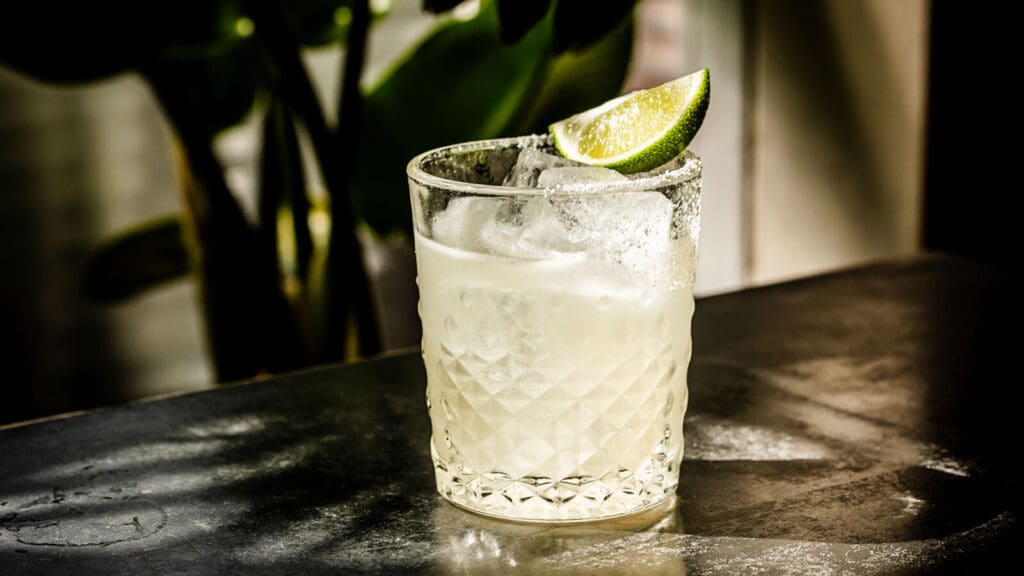
Tommy’s Margarita
A margarita-lover’s favorite margarita (and one of our favorite contemporary cocktails), this sweeter version is extra refreshing and has become a modern classic. Plus, only three ingredients. Check it out:
- Fill a shaker with ice, 2 ounces of blanco tequila, 1 ounce lime juice, and 1/2 ounce agave syrup.
- Shake until the shaker gets a bit frosty.
- Strain into your salt-rimmed glass.
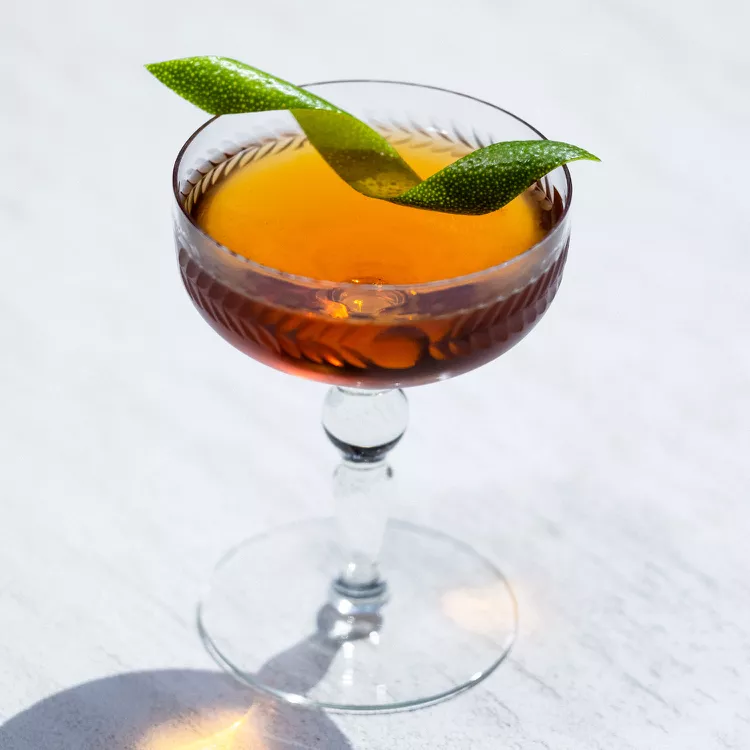
Tequila Manhattan
Imagine the classic cocktail but with the whiskey swapped for your favorite Mexican libation. That’s exactly how you get the tequila manhattan. If you’re not feeling a drink that’s as sweet as some of the others on this list, give this one a shot:
- Add 2 ounces of tequila, 1 ounce vermouth, and 2 dashes of bitters to a mixing glass with ice. Stir until combined.
- Strain into your glass.
- Add your garnish of choice, and enjoy!

Ranch Water
A drink with true Mexican-American roots, ranch water became popular in Texas thanks to its uncanny ability to help the locals beat the hot summer sun. It’s simple, refreshing, and a can’t miss for tequila lovers. Here’s how to make it:
- In a tall glass, mix 1 shot of blanco tequila with a half ounce of fresh lime juice.
- Add 6 ounces of sparkling water (most recipes call for Topo Chico).
- Add a splash of orange liqueur for extra citrus, or more traditionally, don’t.
- Top with a lime wedge and enjoy.
Have a favorite tequila drink that we forgot about? Let us know in the comments and we’ll be sure to give it a try!

Over the last few years, Zach Bryan has exploded from unknown to world-famous thanks to his critically acclaimed albums, lyricism, and branding as a sort of everyman guitar slinger. His most recent project has us especially excited.
“The Great American Bar Scene,” is right up our alley, and the promotion of the new album is even cooler. While most of us only had access to two singles, some lucky bar-goers got the chance to listen to more of the album before its release. Bryan held early Listening parties at 23 bars across the US on June 24th, 2024, 10 days before the albums release.
Which Bars Got Zach Bryan’s Album Early?
Bryan, the Oklahoma native, announced the list of early album listening locations on his Instagram in June, a handful of which are in his home state. Here’s the full list if you’re not looking to hunt them down yourself:
Brillobox – Pittsburgh, PA
Egan & Sons – Montclair, NJ
Barnacle Bill’s – Rumson, NJ
Blarney Stone Pub – Seattle, WA
Charlotte’s Room – Toronto, ON
Dobbies Bar – Dewey, OK
Fox & Locke – Franklin, TN
Iron Horse Saloon – Oologah, OK
Larry’s All American Cafe – Covington, KY
McGlinchey’s – Philadelphia, PA
Mercury Lounge – Tulsa, OK
Million Dollar Cowboy Bar – Jackson, WY
Old Mountain Tavern – Marlington, WV
Polish Lounge – Berea, OH
Rooster’s Sports Bar & Grill – Owasso, OK
Sandy Hut – Portland, OR
Saratoga Lanes – St. Louis, MO
The Gold Mine Restaurant and Saloon – Idaho City, ID
The San Fernando – Glendale, CA
The Water Tank – Austin, TX
Shannon Tavern – Boston, MA
McGlinchey’s in Philadelphia
The Water Tank in Austin
Mostly divey, live music joints, Bryan said that he had chosen these bars because they embodied American culture, and alluded that he might be visiting a handful of them soon!
The album is set to feature 18 tracks total, 17 songs and one poem, and will be released on July 4th, 2024, just in time for all of your independence day festivities.


